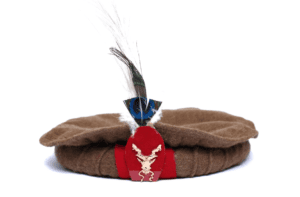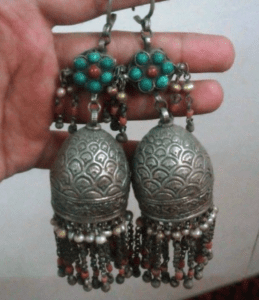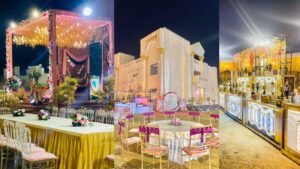Introduction
The majestic northern regions of Pakistan are known for their awe-inspiring landscapes, towering mountain ranges, and diverse cultures. However, another equally enchanting aspect of the region is its rich tradition of handicrafts. From the lush green valleys of Hunza to the snow-covered peaks of Gilgit and Swat, these areas not only offer breath taking travel experiences but also present an opportunity to discover a vibrant and colourful heritage. The intricate craftsmanship of local artisans reflects centuries-old traditions, which continue to thrive in the hands of modern creators.
This blog delves into the fascinating world of handicrafts in Northern Pakistan, how they are deeply interwoven with the travel culture of the region, and what tourists can expect when exploring these hidden treasures.
Cultural Tapestry of Northern Pakistan
The northern areas of Pakistan, encompassing regions like Gilgit-Baltistan, Chitral, Swat, and Kaghan valley, are home to numerous ethnic groups and languages, including Balti, Shina, Wakhi, and Kalasha. Each group boasts its unique set of customs, and much of this cultural diversity is reflected in their traditional handicrafts. Whether it’s the woollen shawls woven by the women of Chitral or the carved wooden furniture of Swat, the artisans of Northern Pakistan carry forward skills passed down through generations.
These crafts have not only survived the challenges of modernity but have evolved into a key component of sustainable tourism. Tourists visiting Northern Pakistan often encounter handicraft stalls, souvenir shops, and even workshops where they can witness artisans at work. This offers travellers a deep, immersive experience, connecting them to the local way of life and adding a layer of authenticity to their journey.
Major Handicrafts of Northern Pakistan


- Woollen Shawls and Carpets
Woollen textiles are among the most popular handicrafts of Northern Pakistan. The cold mountainous climate of the region has made wool a natural resource for creating warm clothing and accessories. The valleys of Swat, Chitral, and Gilgit-Baltistan are known for producing high-quality woollen shawls, rugs, and carpets.
Swat Shawls: Swat, often called the “Switzerland of Pakistan,” is famous for its soft and intricately woven woollen shawls. These shawls are not only warm but also decorated with beautiful embroidery, reflecting local culture and aesthetics. Women in the region play a vital role in the production of these shawls, making them a perfect blend of craftsmanship and functionality.
Baltistani Woollen Rugs: Gilgit-Baltistan is known for its exquisite woollen rugs or ‘ghalech,’ which are handmade and often feature geometric and floral patterns. The wool used in these rugs is locally sourced from yaks and sheep grazing in the high-altitude pastures. These rugs are highly durable and are a prized possession for those who appreciate traditional craftsmanship.
Tourists visiting the Hunza Valley, Skardu, and Gilgit often find themselves purchasing these items not just as souvenirs but as pieces of art that carry the warmth and beauty of the region.
- Embroidery and Needlework


Embroidery is a highly cherished craft in the northern areas of Pakistan, particularly in regions like Hunza, Chitral, and Kohistan. Each valley has its own unique style, with distinct patterns and colours that represent the culture and history of the community.
Chitrali Embroidery: The women of Chitral are known for their exceptional embroidery skills. The traditional ‘Phulkari’ embroidery involves intricate floral designs stitched on fabrics such as wool, cotton, and silk. The colours are bright and often inspired by the surrounding landscape — deep greens, blues, and reds.
Kohistani Embroidery: Another notable example is the embroidery from Kohistan, which features bright colours and detailed geometric designs. These patterns often symbolize the social status and tribal affiliation of the wearer. Garments such as ‘shalwar kameez,’ caps, and home decor items like cushion covers and wall hangings are adorned with this intricate embroidery.
Embroidery in Northern Pakistan is not just a craft; it’s an art form that is woven into the daily lives of the people. For travellers, this provides an excellent opportunity to acquire unique, handmade garments and accessories, each telling a story of its own.
- Chitrali Patti (Woollen Fabric)

The woollen fabric known as “Chitrali Patti” is one of the most sought-after handicrafts of Northern Pakistan. Chitrali Patti is made from hand-spun wool and woven into thick fabric, traditionally used to make garments like coats, vests, and the iconic Chitrali cap, known as “Pakol.”
Chitrali Cap: Perhaps the most famous handicraft from this region is the Chitrali cap, or Pakol, a flat woollen cap worn by men. This cap has become a symbol of Chitral’s identity and is now worn across Pakistan and beyond. It is made by first weaving the wool into a thick fabric and then shaping it into a round, flat cap. The Pakol is not just functional; it’s stylish and comes in various earthy tones that resonate with the natural beauty of Chitral.
This simple yet elegant cap is a favourite among tourists, many of whom buy it as a memento of their journey to the northern mountains. The fabric itself, Chitrali Patti, is used to make coats and shawls that are durable, warm, and fashionable.
- Stone Carving and Metalwork


The northern areas, particularly Gilgit-Baltistan and Swat, have a long history of stone carving and metalwork. Artisans in these regions create everything from intricate jewellery to decorative home items using locally sourced stones and metals.
Gemstone Jewellery: Gilgit-Baltistan is famous for its gemstones, including rubies, emeralds, topaz, and aquamarine. Local jewellers create stunning pieces of jewellery, combining traditional designs with these precious stones. The gemstones are usually sourced from the surrounding mountains, making each piece unique to the region.
Stone Carving: In addition to jewellery, stone carving is a prominent craft, especially in Hunza and Baltistan. Items such as vases, plates, and figurines are intricately carved from local stones, particularly slate and marble. These pieces often feature floral and geometric patterns and make for exquisite souvenirs that reflect the skill and patience of local artisans.
Travellers with an eye for detail and a love for fine craftsmanship will find themselves captivated by the metalwork and stone carvings of Northern Pakistan. These items not only serve as beautiful decorations but also as a reminder of the rugged yet stunning terrain from which they originated.
- Woodwork and Carpentry


Swat and Gilgit-Baltistan are also renowned for their woodwork and carpentry. Local artisans produce an array of items, from intricately carved furniture to smaller decorative pieces such as mirrors, trays, and boxes.
Swati Furniture: Swat Valley is particularly known for its high-quality wooden furniture. Made from local walnut wood, these pieces are often intricately carved with floral and geometric designs. Traditional Swati beds, chairs, and cupboards are highly sought after due to their durability and artistic value.
Hunza Wooden Craft: In Hunza, tourists can find beautifully carved wooden trays, bowls, and wall hangings that showcase the region’s exceptional woodwork skills. The items are made from local timber and often feature traditional patterns that are deeply rooted in the region’s heritage.
For travellers, purchasing a wooden craft is not just about acquiring a beautiful item; it’s about taking home a piece of the region’s history and culture.
Handicrafts and Sustainable Tourism
Handicrafts play a significant role in the promotion of sustainable tourism in Northern Pakistan. As tourists increasingly seek authentic, immersive experiences, the demand for locally made products has grown. This has helped many communities preserve their traditional crafts and provided economic opportunities for local artisans, especially women, who play a significant role in the handicraft industry.
In regions like Hunza and Chitral, local organizations and NGOs have worked to promote handicrafts as a means of sustainable development. By purchasing local handicrafts, travellers contribute directly to the local economy, supporting the artisans who rely on these crafts for their livelihoods. This creates a win-win situation, where tourists get to experience the culture and take home unique, handmade products, while local communities benefit from increased income and the preservation of their traditions.
Journey Through Northern Pakistan
For tourists, Northern Pakistan offers an unparalleled travel experience. From the stunning beauty of the Karakoram and Himalayan mountain ranges to the serene lakes and lush valleys, this region is a paradise for nature lovers and adventurers.
Exploring the local markets, travellers can immerse themselves in the vibrant handicraft culture of the region. The bustling bazaars of Skardu, Hunza, and Chitral are filled with vendors selling woollen shawls, embroidered garments, gemstone jewellery, and carved wooden items. Many artisans are happy to share the story behind their creations, allowing visitors to gain a greater appreciation for the time and effort that goes into each piece.
For those interested in a more hands-on experience, several regions offer workshops where tourists can learn about the crafting process. In Hunza and Skardu, visitors can watch weavers at work, try their hand at embroidery, or even take part in gemstone polishing. These activities provide a unique opportunity to engage with the local culture and bring back more than just material souvenirs, memories of personal connection and shared creativity.
Conclusion
Traveling through Northern Pakistan is a journey not only through some of the world’s most stunning landscapes but also through centuries-old traditions and craftsmanship. The region’s handicrafts, whether they are the woollen shawls of Swat, the embroidered garments of Chitral, or the carved wooden furniture of Hunza, tell stories of resilience, creativity, and a deep connection to nature.
As tourism in Northern Pakistan grows, so too does the appreciation for its handicrafts. For travellers, purchasing a locally made item is not just a way to support the local economy but also a way to take home a piece of the region’s soul. Whether you’re exploring the markets of Skardu or taking a workshop in Gilgit, the handicrafts of Northern Pakistan offer a rich, immersive experience that will stay with you long after you’ve left the mountains behind.
So, the next time you find yourself in the valleys of the north, don’t just admire the scenery, take the time to explore the handicrafts and meet the artisans who are the custodians of this remarkable cultural heritage. You’ll discover that the beauty of Northern Pakistan goes far beyond its landscapes; it’s woven into the very fabric of its people and their crafts.







129 responses
buy facebook profile website for buying accounts verified accounts for sale
buy fb ad account buy and sell accounts profitable account sales
buy tiktok ads https://buy-tiktok-ads.org
tiktok ads account for sale https://buy-tiktok-business-account.org